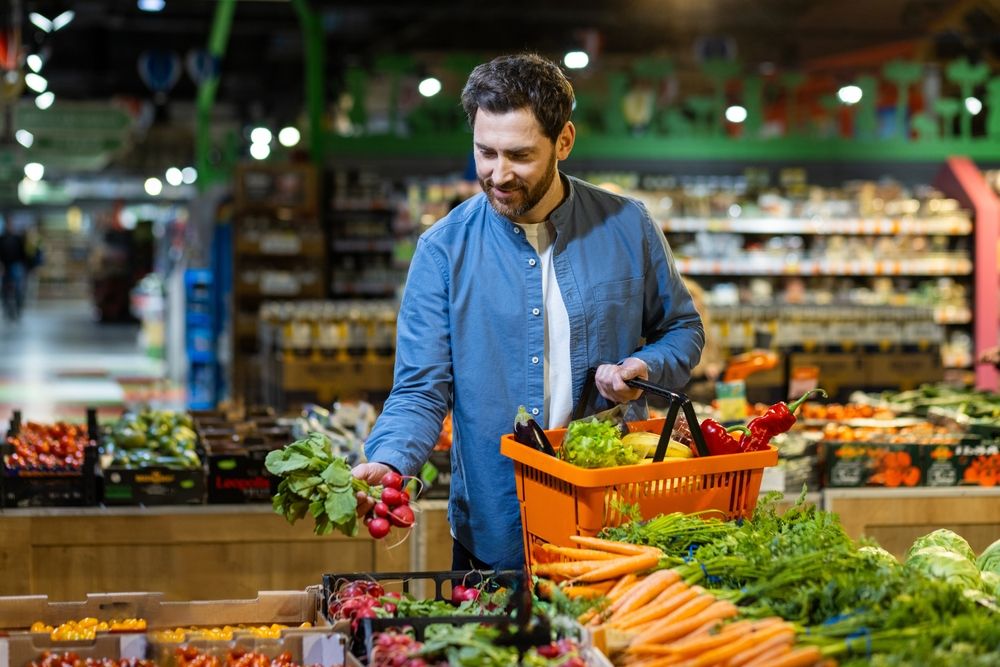Fresh vegetables are the cornerstone of healthy eating, vibrant cooking, and flavorful meals. Whether you shop at a grocery store, local farmer’s market, or grow your own, knowing how to pick the freshest vegetables ensures you’re getting the best taste, maximum nutrients, and longest shelf life.
So how can you tell if produce is truly fresh? Here’s a practical guide to help you confidently select vegetables that are ripe, crisp, and ready to enjoy.
Look for Bright, Vibrant Color
One of the easiest ways to spot fresh vegetables is by their color. Most vegetables should appear rich, saturated, and consistent in color.
-
Leafy greens like lettuce, kale, or spinach should be deep green without yellow or brown spots.
-
Carrots, bell peppers, and tomatoes should show strong, bright hues that match their variety.
-
Cauliflower or cabbage should have creamy whites or purples without dull or dark areas.
Dull, faded, or blotchy colors often mean the vegetable is old or improperly stored.
Check for Firmness and Texture
Gently squeeze or press the vegetable. Fresh vegetables generally feel firm and sturdy.
-
Carrots, cucumbers, and zucchini should be solid with no soft spots.
-
Eggplants and peppers should have a slight give but bounce back.
-
Root vegetables like potatoes or beets should be heavy for their size and free from large blemishes.
If you feel mushy areas, that’s a sign of breakdown and age.
Inspect the Skin and Surface
The exterior tells a lot about freshness.
-
Look for smooth, unwrinkled skin.
-
Avoid vegetables with cuts, cracks, or bruises, which can invite mold and bacteria.
-
Some minor natural markings or light scarring are normal, especially for organic produce, but large wounds or shriveled skin usually mean it’s past prime.
Examine Leaves and Tops
For vegetables that still have leafy tops—like carrots, radishes, or beets—the greens are a strong indicator of overall freshness.
-
They should look lively and green, not wilted, slimy, or yellowing.
-
If the tops are already removed (as is often the case in grocery stores), inspect where they were cut; it should look moist and fresh, not dried out.
Pay Attention to Aroma
Fresh vegetables often have a pleasant, clean, slightly earthy smell.
-
Tomatoes smell sweet and grassy near the stem.
-
Herbs like cilantro or parsley should be aromatic when gently rubbed.
-
If vegetables smell sour, musty, or overly strong (other than naturally pungent varieties like onions or garlic), they may be spoiled.
Know the Specific Signs by Vegetable Type
Each vegetable has unique markers of peak freshness. Here’s a quick guide:
-
Tomatoes: Plump, slightly soft to the touch, and fragrant. Avoid ones with cracked skin or leaking juice.
-
Broccoli: Tight, dark green florets and firm stalks. Yellowing tips or limp stems mean it’s aging.
-
Lettuce and spinach: Crisp, perky leaves. Stay away from soggy, slimy, or darkened leaves.
-
Peppers: Smooth skin that’s heavy for its size. Wrinkles indicate moisture loss.
-
Cucumbers: Firm with a slight sheen. Soft ends mean they’re starting to deteriorate.
-
Corn: Bright green husks that cling tightly, with sticky, golden silk. Kernels should squirt juice when pressed.
-
Carrots: Firm with bright orange color. Limpness or rubbery feel shows they’re drying out.
-
Green beans: Snappy and bright. If they bend without snapping, they’re past their best.
Consider Season and Local Sources
Vegetables in season and grown locally are almost always fresher. They’re harvested closer to the time you buy them, so they spend less time in transit and storage.
For example:
-
Spring: Asparagus, peas, radishes.
-
Summer: Tomatoes, cucumbers, peppers, zucchini.
-
Fall: Squash, pumpkins, Brussels sprouts.
-
Winter: Kale, carrots, turnips.
Shopping at farmer’s markets is a great way to get produce that was often picked just a day or two before.
Don’t Rely on Size Alone
Bigger isn’t always better. Oversized vegetables can sometimes be woody or bitter. For instance:
-
Large zucchini or eggplants may have more seeds and tougher flesh.
-
Gigantic carrots may be less sweet than smaller, younger ones.
Choose medium-sized, uniform vegetables for the best texture and taste.
How to Tell If Vegetables Are Past Their Prime
Some clear signs vegetables are no longer fresh include:
-
Excessive softness or mushiness.
-
Wrinkled, shriveled, or dried-out skin.
-
Dark, sunken spots or mold.
-
Strong, off-putting odors.
It’s normal for older vegetables to be usable in cooked dishes (like soups or stews) even if not ideal raw, but avoid anything slimy, leaking, or with significant mold.
Tips for Buying and Storing Vegetables
-
Shop frequently for smaller amounts. Buying too much at once increases the risk of waste.
-
Store vegetables properly—leafy greens in breathable bags, potatoes in a cool dark place, and most others in the fridge’s crisper drawer.
-
Wash vegetables right before eating or cooking. Washing before storage can sometimes accelerate spoilage by introducing extra moisture.
Choosing fresh vegetables is both an art and a habit. By paying attention to color, firmness, smell, and knowing what each vegetable should look like at its best, you’ll consistently bring home better-tasting, more nutritious produce.
Over time, picking out the freshest vegetables becomes second nature. And the payoff—crisp salads, flavorful stir-fries, and sweet, juicy bites of garden-fresh produce—makes it well worth the effort.


